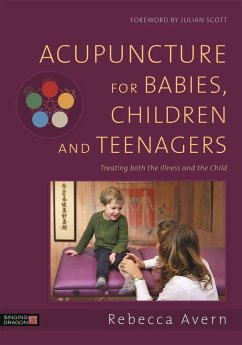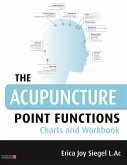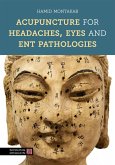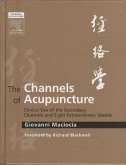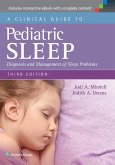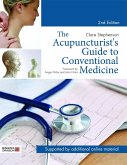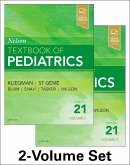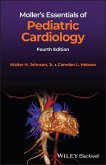Rebecca AvernTreating Both the Illness and the Child
Acupuncture for Babies, Children and Teenagers
Treating Both the Illness and the Child
Illustrator: Hoyle, Sarah
Rebecca AvernTreating Both the Illness and the Child
Acupuncture for Babies, Children and Teenagers
Treating Both the Illness and the Child
Illustrator: Hoyle, Sarah
- Gebundenes Buch
- Merkliste
- Auf die Merkliste
- Bewerten Bewerten
- Teilen
- Produkt teilen
- Produkterinnerung
- Produkterinnerung
This colour textbook enables acupuncturists to diagnose and treat physical and emotional ailments in babies, children and teenagers. It draws on the author's extensive clinical experience to provide solutions to a wide range of conditions including asthma, allergies, bedwetting, digestive issues, ADHD and depression.
Andere Kunden interessierten sich auch für
![The Acupuncture Point Functions Charts and Workbook The Acupuncture Point Functions Charts and Workbook]() Erica SiegelThe Acupuncture Point Functions Charts and Workbook31,99 €
Erica SiegelThe Acupuncture Point Functions Charts and Workbook31,99 €![Acupuncture for Headaches, Eyes and ENT Pathologies Acupuncture for Headaches, Eyes and ENT Pathologies]() Hamid MontakabAcupuncture for Headaches, Eyes and ENT Pathologies57,99 €
Hamid MontakabAcupuncture for Headaches, Eyes and ENT Pathologies57,99 €![The Channels of Acupuncture The Channels of Acupuncture]() Giovanni Maciocia (Acupuncturist and UK Medical HerbalistThe Channels of Acupuncture195,99 €
Giovanni Maciocia (Acupuncturist and UK Medical HerbalistThe Channels of Acupuncture195,99 €![A Clinical Guide to Pediatric Sleep A Clinical Guide to Pediatric Sleep]() Jodi A. MindellA Clinical Guide to Pediatric Sleep69,99 €
Jodi A. MindellA Clinical Guide to Pediatric Sleep69,99 €![The Acupuncturist's Guide to Conventional Medicine, Second Edition The Acupuncturist's Guide to Conventional Medicine, Second Edition]() Clare StephensonThe Acupuncturist's Guide to Conventional Medicine, Second Edition109,99 €
Clare StephensonThe Acupuncturist's Guide to Conventional Medicine, Second Edition109,99 €![Nelson Textbook of Pediatrics, 2-Volume Set Nelson Textbook of Pediatrics, 2-Volume Set]() Kliegman, Robert, MD (Professor & Department of Pedi Chair EmeritusNelson Textbook of Pediatrics, 2-Volume Set180,99 €
Kliegman, Robert, MD (Professor & Department of Pedi Chair EmeritusNelson Textbook of Pediatrics, 2-Volume Set180,99 €![Moller's Essentials of Pediatric Cardiology Moller's Essentials of Pediatric Cardiology]() Walter H. Johnson (USA University of Alabama at Birmingham)Moller's Essentials of Pediatric Cardiology77,99 €
Walter H. Johnson (USA University of Alabama at Birmingham)Moller's Essentials of Pediatric Cardiology77,99 €-
-
-
This colour textbook enables acupuncturists to diagnose and treat physical and emotional ailments in babies, children and teenagers. It draws on the author's extensive clinical experience to provide solutions to a wide range of conditions including asthma, allergies, bedwetting, digestive issues, ADHD and depression.
Hinweis: Dieser Artikel kann nur an eine deutsche Lieferadresse ausgeliefert werden.
Hinweis: Dieser Artikel kann nur an eine deutsche Lieferadresse ausgeliefert werden.
Produktdetails
- Produktdetails
- Verlag: Jessica Kingsley Publishers
- 1st ed.
- Seitenzahl: 776
- Erscheinungstermin: 21. September 2018
- Englisch
- Abmessung: 260mm x 180mm x 53mm
- Gewicht: 2225g
- ISBN-13: 9781848193222
- ISBN-10: 184819322X
- Artikelnr.: 52414985
- Herstellerkennzeichnung
- Libri GmbH
- Europaallee 1
- 36244 Bad Hersfeld
- gpsr@libri.de
- Verlag: Jessica Kingsley Publishers
- 1st ed.
- Seitenzahl: 776
- Erscheinungstermin: 21. September 2018
- Englisch
- Abmessung: 260mm x 180mm x 53mm
- Gewicht: 2225g
- ISBN-13: 9781848193222
- ISBN-10: 184819322X
- Artikelnr.: 52414985
- Herstellerkennzeichnung
- Libri GmbH
- Europaallee 1
- 36244 Bad Hersfeld
- gpsr@libri.de
Rebecca Avern is a paediatric acupuncturist with 20 years' experience. She runs a clinic for children in Oxford, UK and is a lecturer at the College of Integrated Chinese Medicine. She is the author of the textbook Acupuncture for Babies, Children and Teenagers. She is the founder of the Institute of Paediatric Acupuncture.
Acknowledgements. Notes for the reader. Introduction. Part 1 - Why do
children become ill? 1. Introduction to causes of disease. 2. The nature of
children. 3. How children grow. 4. Constitutional, pregnancy and birth
factors. 5. Emotions. 6. The role of the family. 7. The challenges of life.
8. Miscellaneous Causes of Disease. 9. External Causes of Disease. Part 2 -
Diagnosis of Children. 10. Introduction to diagnosis of children. 11.
Building rapport with children. 12. The Diagnostic process. 13. Diagnosis
of babies and infants. 14. Five Element Constitutional Acupuncture applied
to children. 15. Diagnosis Using Five Element Constitutional Acupuncture.
16. The Fire Element. 17. The Earth Element. 18. The Metal Element. 19. The
Water Element. 20. The Wood Element. 21. The Heart and Pericardium. 22. The
Spleen. 23. The Lungs. 24. The Kidneys. 25. The Liver. 26. The Yang Organs.
27. Non-Organ patterns. Part 3 - Treatment of Children. 28. Introduction to
the treatment of children. 29. Treating the whole child. 30. Treatment of
the constitutional imbalance. 31. Child-friendly needling. 32. Points
commonly used to treat children. 33. Alternatives to needling. 34.
Paediatric tui na. 35. Shonishin. 36. Advice. Part 4 - Treatment of
Mental-emotional conditions. 37. Introduction to the treatment of
mental-emotional conditions. 38. Hyperactivity, inattention and learning
difficulties. 39. Autistic spectrum disorders. 40. Anxiety and depression.
41. Eating disorders. 42. Self-harm. 43. Sleep problems. Part 5 - Treatment
of Physical conditions. 44. Introduction to the treatment of physical
conditions. 45. Problems with eating and appetite. 46. Stomach ache
(including colic and reflux). 47. Loose bowels. 48. Constipation. 49.
Nausea and vomiting. 50. Food allergiesand intolerances. 51. Myalgic
Encephalomyelitis/ Chronic Fatigue Syndrome. 52. Chronic cough. 53. Asthma.
54. Eczema. 55. Allergic rhinitis and hayfever. 56. Ear conditions. 57.
Sore throat. 58. Nosebleeds. 59. Bedwetting. 60. Urinary tract infections.
61. Headaches and migraines. 62. Seizures. 63. Tics. 64. Conjunctivitis.
65. Mouth ulcers and oral thrush. 66. Problems with teeth and teething. 67.
Growing pains. 68. Teenage Menstrual problems. 69. Difficult or early
puberty in girls. 70. Acute conditions. Appendix 1. Bibliography.
children become ill? 1. Introduction to causes of disease. 2. The nature of
children. 3. How children grow. 4. Constitutional, pregnancy and birth
factors. 5. Emotions. 6. The role of the family. 7. The challenges of life.
8. Miscellaneous Causes of Disease. 9. External Causes of Disease. Part 2 -
Diagnosis of Children. 10. Introduction to diagnosis of children. 11.
Building rapport with children. 12. The Diagnostic process. 13. Diagnosis
of babies and infants. 14. Five Element Constitutional Acupuncture applied
to children. 15. Diagnosis Using Five Element Constitutional Acupuncture.
16. The Fire Element. 17. The Earth Element. 18. The Metal Element. 19. The
Water Element. 20. The Wood Element. 21. The Heart and Pericardium. 22. The
Spleen. 23. The Lungs. 24. The Kidneys. 25. The Liver. 26. The Yang Organs.
27. Non-Organ patterns. Part 3 - Treatment of Children. 28. Introduction to
the treatment of children. 29. Treating the whole child. 30. Treatment of
the constitutional imbalance. 31. Child-friendly needling. 32. Points
commonly used to treat children. 33. Alternatives to needling. 34.
Paediatric tui na. 35. Shonishin. 36. Advice. Part 4 - Treatment of
Mental-emotional conditions. 37. Introduction to the treatment of
mental-emotional conditions. 38. Hyperactivity, inattention and learning
difficulties. 39. Autistic spectrum disorders. 40. Anxiety and depression.
41. Eating disorders. 42. Self-harm. 43. Sleep problems. Part 5 - Treatment
of Physical conditions. 44. Introduction to the treatment of physical
conditions. 45. Problems with eating and appetite. 46. Stomach ache
(including colic and reflux). 47. Loose bowels. 48. Constipation. 49.
Nausea and vomiting. 50. Food allergiesand intolerances. 51. Myalgic
Encephalomyelitis/ Chronic Fatigue Syndrome. 52. Chronic cough. 53. Asthma.
54. Eczema. 55. Allergic rhinitis and hayfever. 56. Ear conditions. 57.
Sore throat. 58. Nosebleeds. 59. Bedwetting. 60. Urinary tract infections.
61. Headaches and migraines. 62. Seizures. 63. Tics. 64. Conjunctivitis.
65. Mouth ulcers and oral thrush. 66. Problems with teeth and teething. 67.
Growing pains. 68. Teenage Menstrual problems. 69. Difficult or early
puberty in girls. 70. Acute conditions. Appendix 1. Bibliography.
Acknowledgements. Notes for the reader. Introduction. Part 1 - Why do
children become ill? 1. Introduction to causes of disease. 2. The nature of
children. 3. How children grow. 4. Constitutional, pregnancy and birth
factors. 5. Emotions. 6. The role of the family. 7. The challenges of life.
8. Miscellaneous Causes of Disease. 9. External Causes of Disease. Part 2 -
Diagnosis of Children. 10. Introduction to diagnosis of children. 11.
Building rapport with children. 12. The Diagnostic process. 13. Diagnosis
of babies and infants. 14. Five Element Constitutional Acupuncture applied
to children. 15. Diagnosis Using Five Element Constitutional Acupuncture.
16. The Fire Element. 17. The Earth Element. 18. The Metal Element. 19. The
Water Element. 20. The Wood Element. 21. The Heart and Pericardium. 22. The
Spleen. 23. The Lungs. 24. The Kidneys. 25. The Liver. 26. The Yang Organs.
27. Non-Organ patterns. Part 3 - Treatment of Children. 28. Introduction to
the treatment of children. 29. Treating the whole child. 30. Treatment of
the constitutional imbalance. 31. Child-friendly needling. 32. Points
commonly used to treat children. 33. Alternatives to needling. 34.
Paediatric tui na. 35. Shonishin. 36. Advice. Part 4 - Treatment of
Mental-emotional conditions. 37. Introduction to the treatment of
mental-emotional conditions. 38. Hyperactivity, inattention and learning
difficulties. 39. Autistic spectrum disorders. 40. Anxiety and depression.
41. Eating disorders. 42. Self-harm. 43. Sleep problems. Part 5 - Treatment
of Physical conditions. 44. Introduction to the treatment of physical
conditions. 45. Problems with eating and appetite. 46. Stomach ache
(including colic and reflux). 47. Loose bowels. 48. Constipation. 49.
Nausea and vomiting. 50. Food allergiesand intolerances. 51. Myalgic
Encephalomyelitis/ Chronic Fatigue Syndrome. 52. Chronic cough. 53. Asthma.
54. Eczema. 55. Allergic rhinitis and hayfever. 56. Ear conditions. 57.
Sore throat. 58. Nosebleeds. 59. Bedwetting. 60. Urinary tract infections.
61. Headaches and migraines. 62. Seizures. 63. Tics. 64. Conjunctivitis.
65. Mouth ulcers and oral thrush. 66. Problems with teeth and teething. 67.
Growing pains. 68. Teenage Menstrual problems. 69. Difficult or early
puberty in girls. 70. Acute conditions. Appendix 1. Bibliography.
children become ill? 1. Introduction to causes of disease. 2. The nature of
children. 3. How children grow. 4. Constitutional, pregnancy and birth
factors. 5. Emotions. 6. The role of the family. 7. The challenges of life.
8. Miscellaneous Causes of Disease. 9. External Causes of Disease. Part 2 -
Diagnosis of Children. 10. Introduction to diagnosis of children. 11.
Building rapport with children. 12. The Diagnostic process. 13. Diagnosis
of babies and infants. 14. Five Element Constitutional Acupuncture applied
to children. 15. Diagnosis Using Five Element Constitutional Acupuncture.
16. The Fire Element. 17. The Earth Element. 18. The Metal Element. 19. The
Water Element. 20. The Wood Element. 21. The Heart and Pericardium. 22. The
Spleen. 23. The Lungs. 24. The Kidneys. 25. The Liver. 26. The Yang Organs.
27. Non-Organ patterns. Part 3 - Treatment of Children. 28. Introduction to
the treatment of children. 29. Treating the whole child. 30. Treatment of
the constitutional imbalance. 31. Child-friendly needling. 32. Points
commonly used to treat children. 33. Alternatives to needling. 34.
Paediatric tui na. 35. Shonishin. 36. Advice. Part 4 - Treatment of
Mental-emotional conditions. 37. Introduction to the treatment of
mental-emotional conditions. 38. Hyperactivity, inattention and learning
difficulties. 39. Autistic spectrum disorders. 40. Anxiety and depression.
41. Eating disorders. 42. Self-harm. 43. Sleep problems. Part 5 - Treatment
of Physical conditions. 44. Introduction to the treatment of physical
conditions. 45. Problems with eating and appetite. 46. Stomach ache
(including colic and reflux). 47. Loose bowels. 48. Constipation. 49.
Nausea and vomiting. 50. Food allergiesand intolerances. 51. Myalgic
Encephalomyelitis/ Chronic Fatigue Syndrome. 52. Chronic cough. 53. Asthma.
54. Eczema. 55. Allergic rhinitis and hayfever. 56. Ear conditions. 57.
Sore throat. 58. Nosebleeds. 59. Bedwetting. 60. Urinary tract infections.
61. Headaches and migraines. 62. Seizures. 63. Tics. 64. Conjunctivitis.
65. Mouth ulcers and oral thrush. 66. Problems with teeth and teething. 67.
Growing pains. 68. Teenage Menstrual problems. 69. Difficult or early
puberty in girls. 70. Acute conditions. Appendix 1. Bibliography.

